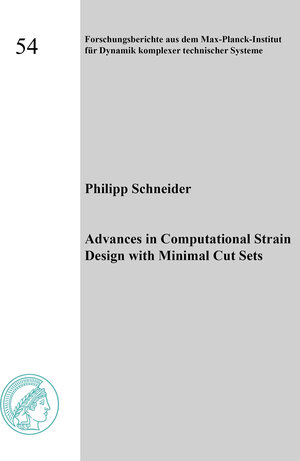Advances in Computational Strain Design with Minimal Cut Sets
von Philipp SchneiderMetabolic engineering aims to manipulate metabolic networks for different purposes, ranging from the effective bioproduction of value-added chemicals with microorganisms to medical applications. The minimal cut set (MCS) method presents a powerful computational tool for the design of genome-scale metabolic networks. By the means of mixed integer linear programming (MILP), the MCS method identifies a minimal set of genetic intervention targets that reshapes a wild type metabolism according to a template of undesired and desired metabolic functions. This work presents theoretical and algorithmic advances for different stages of the MCS workflow. Many existing strain design approaches aim to enforce growth-coupled production, using different notions of the growth-coupling principle. A systematization of the existing notions into four different coupling degrees serves as a starting point for employing the MCS algorithm for growth-coupled strain design. The formalization of complex strain design tasks as MCS problems is often limited by the feature set of the traditional MCS algorithm. The specification of multiple desired and undesired flux spaces, the use of „optimality constraints“, the declaration of reaction or gene addition candidates and the application of individual intervention costs generalize the MCS approach and allow the tailoring of the metabolic flux space with unprecedented precision. An MCS computation yields up to some thousand strain design candidates that can be further characterized with different criteria using computational methods. A subsequent ranking of strain designs helps to select the most promising candidate for experimental implementation.






